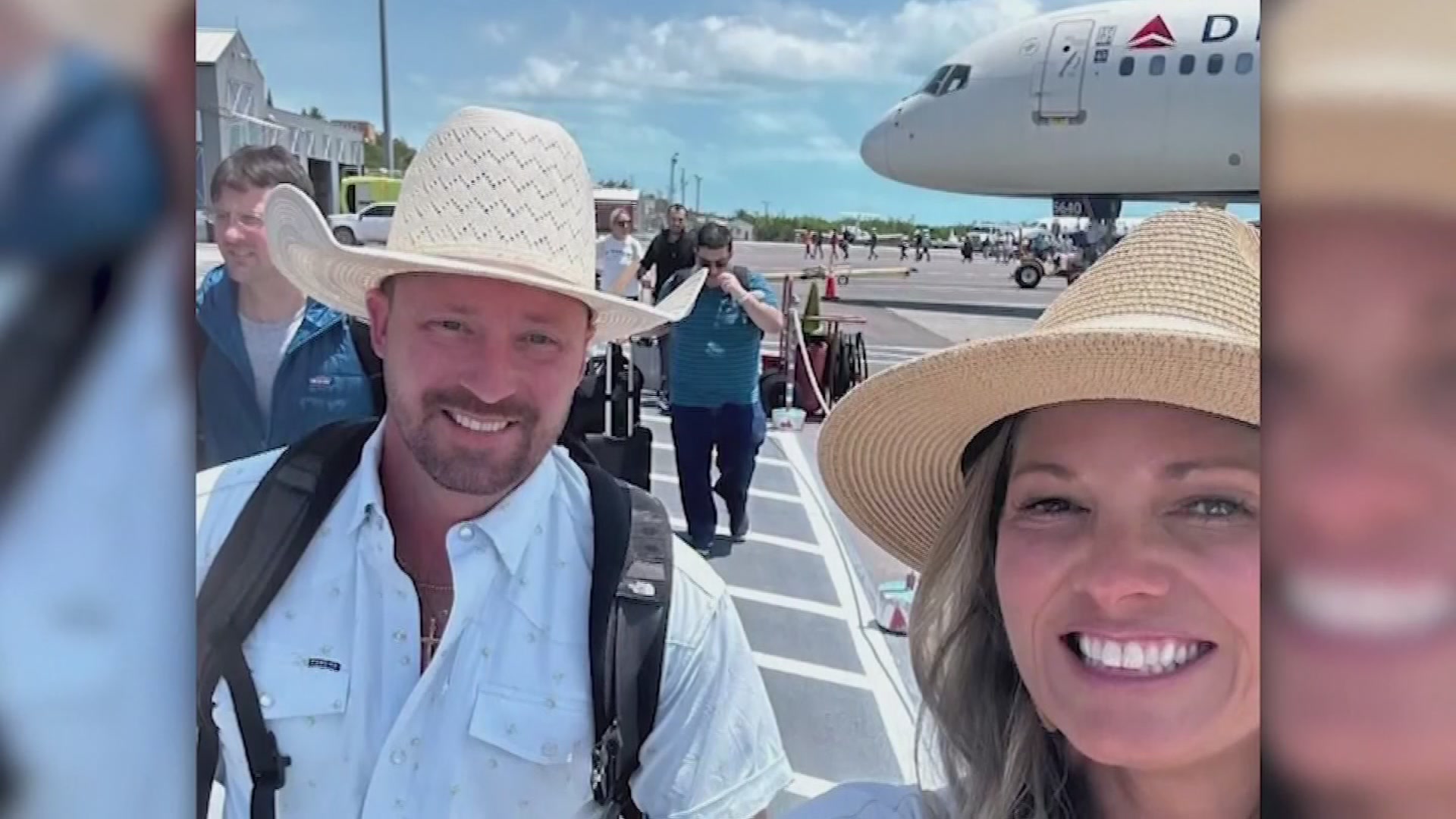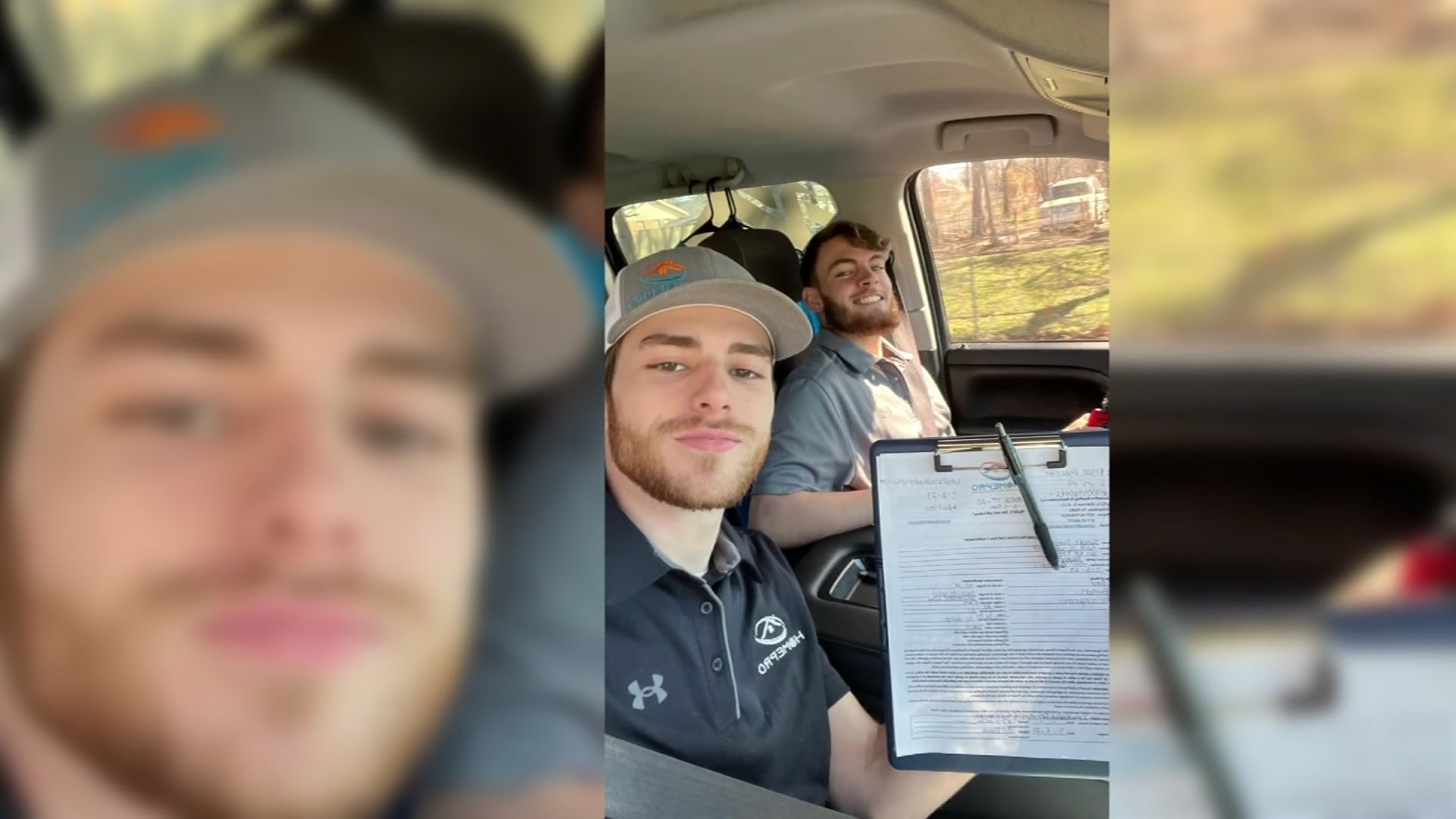Virtual work meetings are now the norm in many office settings, but never did one North Texas woman think that one of those calls would save her life.
Colleagues Laurie Enright and Vicki Dennis meet weekly over Microsoft Teams.
Enright is the marketing director for UT Southwestern’s Peter O’Donnell Jr. Brain Institute.
Dennis is the associate vice president for the O’Donnell Brain Institute.
Get DFW local news, weather forecasts and entertainment stories to your inbox. Sign up for NBC DFW newsletters.
In an instant, life changed during one of their weekly meetings.
"She said, 'oh, just one more thing,' so I was like, 'OK,' and right at that moment, she went blurry on me," recalled Enright.
At that moment, an aneurysm had ruptured in Enright's brain.
Local
The latest news from around North Texas.
"She kind of cocked her head. And so, I thought the screen had frozen, and I said, 'Laurie, can you hear me?' said Dennis.
"I remember also telling Vicki that my head hurt so badly. It was the most excruciating pain I had ever felt and I was nauseous. I hear people talk about migraines, so I didn't know what was happening. I just knew that I had lost consciousness. I knew that I was nauseous, I knew that my head hurt and I knew Vicki was insistent on me going to the emergency room," said Enright.
Dennis called 911.
"I heard Laurie make a noise and I said, 'OK, I'm going to start saying numbers. I need an address.' So I said, 'I'm going to say numbers and when I get to the number, you make a noise.' That's how we got the street number for the house," said Dennis.
Doctors at UT Southwestern Clements Jr. University Hospital discovered the Enright's brain bleed.
Dr. Jonathan White, a Professor in the Neurological Surgery and Radiology Departments at UT Southwestern, said preliminary tests showed Enright had an aneurysm on her left middle cerebral artery.
“When an aneurysm ruptures, it raises pressure inside the head and causes a traumatic brain injury, it’s almost like getting in a car accident,” White explained.
About 50% of the time, the aneurysm is fatal while "the other 50% of the time, miraculously, the body is able to seal off the rupture," said White.
"I actually couldn't process it at all. I couldn't believe that that's what I had suffered because, by the time they got me to the emergency room, I felt so normal," said Enright.
In her case, her body had begun to seal off the rupture, but over the next 24-48, doctors determined the best course of action would be to surgically stop the bleeding and repair the blood vessel.
The surgery took six hours as Dennis waited anxiously.
"The surgeons had come up from the O.R," said Dennis, "and I went over to hug them. I said, 'I just, I can't say anything except thank you,' and they said, 'well, Vicki, this is what we do,' and I said, 'it is, but it's different when you do it for one of ours.'"
Enright recovered from the aneurysm rupture and the craniotomy and is now living life to the fullest with her husband and two daughters.

Doctors found she has three other brain aneurysms, but she said she's grateful she knows they’re there and they can be monitored.
She's more grateful, however, for being in the right place at the right time, on an on-screen call with her colleague, when the unimaginable occurred.
"I would have probably thought, 'I need to go lay down and I need to rest,' and so I'm so grateful that Vicki was on the call with me because otherwise, I wouldn't have called 911. I wouldn't have," said Enright.
WHAT IS AN ANEURYSM?
A brain aneurysm is a weak spot on the wall of a blood vessel in the brain. Blood flowing past the weak spot causes it to bulge like a thin balloon or a weak tire inner tube, creating the aneurysm.

Most brain aneurysms don’t rupture or cause symptoms.
Unruptured brain aneurysms are often discovered incidentally, during an MRI or CT scan for an unrelated headache or other condition.
The larger an aneurysm gets, the more likely it is to rupture.
Factors that may contribute to the formation of brain aneurysms include high blood pressure, cigarette smoking, family history, injury or trauma to blood vessels or complications from a blood infection.
To read more of Enright's story and about aneurysms, click here.




